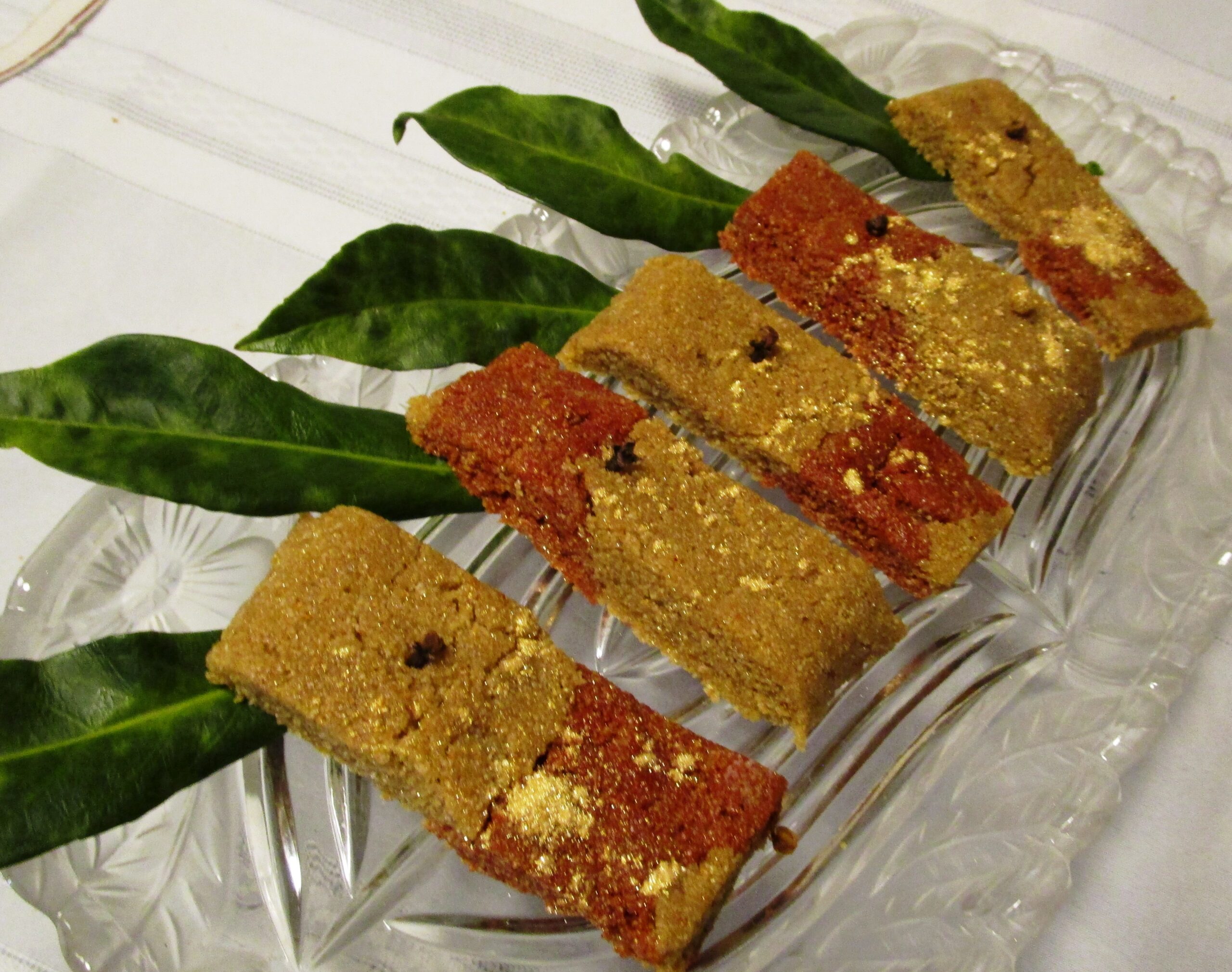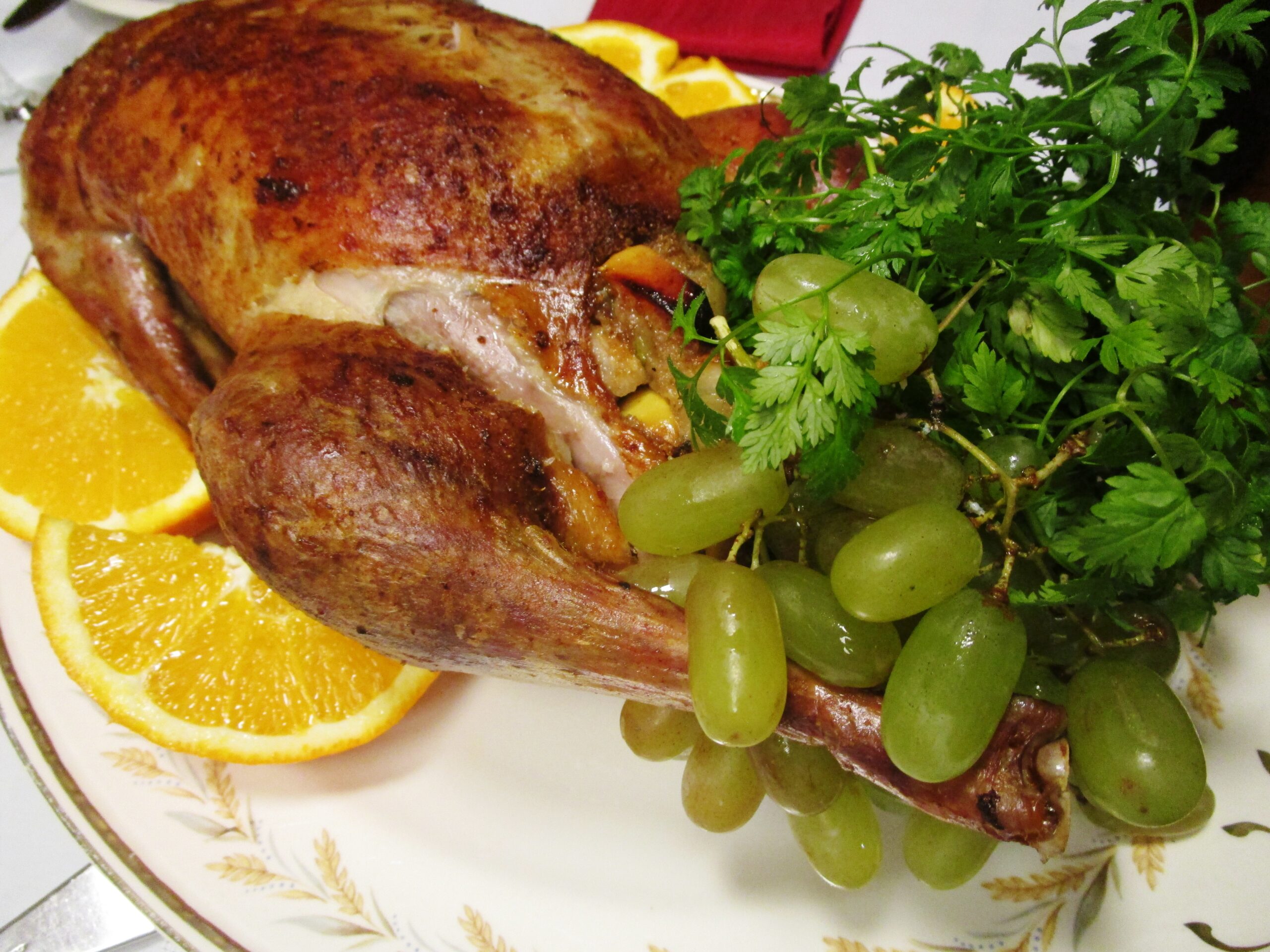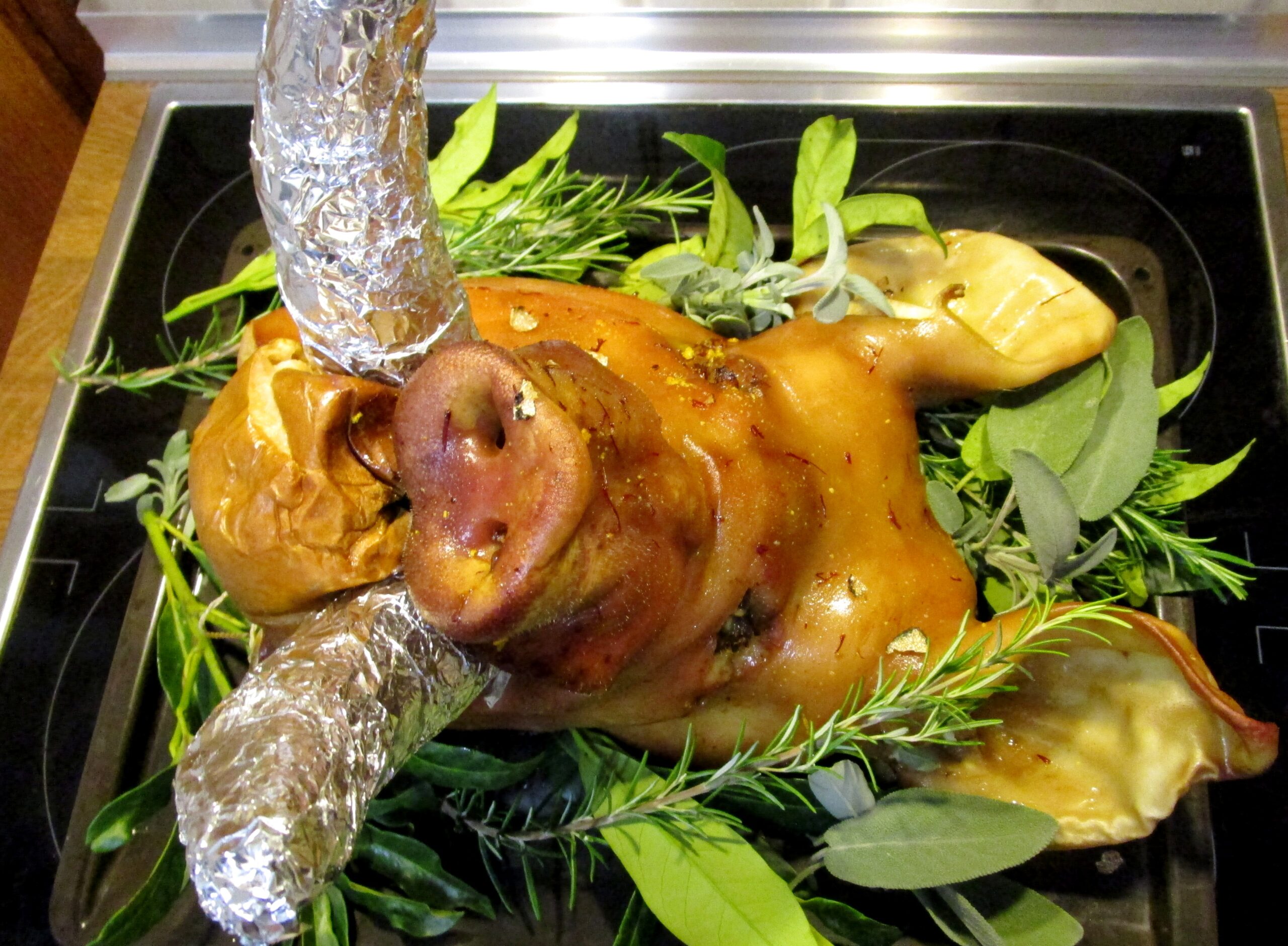My medieval gingerbread. The orange color comes from sandalwood, which also lent a delicate flavor. The Case of the Missing Ginger There’s a recipe for Gyngerbrede in a 15th-century collection in the British Library (Harley MS 279). Like any baker...
My duck with sawse madame, stuffed with quince and pears and decorated with oranges, fresh grapes, and chervil from my garden. Sawse Madame Galangal and poudre douce…. On the fourth day of Chrismas, in my attempt to create a memorable...
Some medieval flavorings, clockwise from the top: verjuice, grains of paradise, galangal, long pepper, hyssop, and sandalwood. Spices, spices spices! Sour and hot, the two flavor directions of the medieval cuisine, brand the food as distinct...
Bohemian napkin dumplings — a recipe from my Czech grandmother. Good King Wenceslaus looked out, on the Feast of Stephen, when the show lay round about, deep and crisp and even. Now I’m steering my time machine to Bohemia. Dec. 26 is the Feast...
Our boar’s head, bedeck’d with a garland of laurel, rosemary, and sage. The rosemary and sage are fresh from our garden and the laurel came from a neighbor. Thank you, Frau Spies! The boar’s head, as I understandIs the rarest dish...
Time machine by Frank Pfeiffer, Pixabay Medieval food as a time machine? Why not, I thought, when the ad showed up on my newsfeed in November. A Taste of Christmas Past Eatmedieval, a collaboration between Durham University and Blackfriars...






Recent Comments